News, ULD CARE News, Airports, Cargo Terminals, Freight Forwarders, Ground Handlers, ULD Service providers
The Dollars and Cents of ULD Ownership
For people involved in the daily management of ULD activities the various costs are well known.
|
Indeed the costs are often a source of considerable concern. But for the vast majority of the airline and air cargo industry for whom “ULDs are someone else’s issue”, these costs are something of a mystery. We are devoting this ULD CARE article to the subject of cost of ownership. In doing so, we hope to broaden peoples’ perspective about this important subject. To the person who has never bought a ULD, nor paid to repair a ULD, it may come as quite a surprise to find that what seems to be nothing more than a simple box or pallet is in fact an expensive piece of equipment.
More specialist containers, such as main deck units with features such as Garment on Hangar provisions, metal doors and double bases, will cost around US $5,000 to US $6,000. Even more expensive are the temperature controlled units. Prices of these units can be multiples of even specialist containers.
But unlike many consumer products we all purchase today which come with 5 year warranties etc., ULDs can be damaged from day 1 and can incur substantial repair costs. Indeed, unlike so many consumer products, ULDs will, over their normal 10 year life span, require between 2 and 3 times their initial purchase price in repair costs! Imagine if your kitchen refrigerator or even your car required 2 to3 times its initial purchase price in repairs over 10 years! But then you probably don’t use a forklift to move your refrigerator around or drive your car into a wall every few months.
Estimates for the annual spend by airlines and other ULD owners on ULD repairs are approximately US $300 million. This figure will probably come as a surprise to those who think of ULD as “just a box”.
To these not insignificant expenditures associated with purchasing and maintaining ULDs, airlines also have to deal with the costs resulting from damage to aircraft structures and systems caused by improper ULDs. The most common damage is to aircraft hold liners, caused by out of contour containers or pallet loads scraping along the interior of the cargo hold. The hold liners, which are made of very costly materials having special fire containment properties, must be replaced if punctured. This is an expensive and time consuming activity. Not far behind comes damage to the power drive units which move the ULDs into position, and to rollers which support the ULDs. Poorly loaded ULDs, or units with damaged bases, can wreak havoc with these components of the aircraft cargo loading system.
Accurate figures for damage to aircraft holds and equipment caused by ULDs are hard to come by, but generally accepted figures are that these costs exceed US $100 million a year. (Of course, this is in addition to the US $300 million cost to repair ULDs.) If this article presents a rather surprising set of costs to anyone not familiar with the economics of ULD ownership, there is more to come. In the wake of two major crashes attributable to on board fires, the industry is gearing up for the introduction of FCCs (Fire Containment Covers) and FRCs (Fire Resistant Containers). With FCCs already in service with 2 major airlines and FRCs also entering service, these items will soon start to be a familiar part of cargo operations. They will come with significant costs both for initial purchase and for repair and maintenance. These special purpose ULDs, provide an additional level of safety against fires. This is over and above the traditional ULD function of restraining loads while in transit. They also present significant cost to airlines. Without the full cooperation of the entire air cargo industry to minimize the damage and losses to this specialist equipment, airlines will continue to shoulder the very significant burden of owning and providing ULDs that facilitate the daily operations of the air cargo industry. |


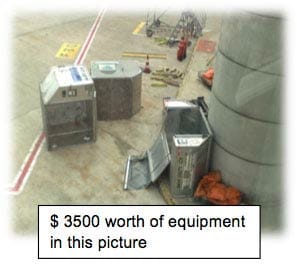
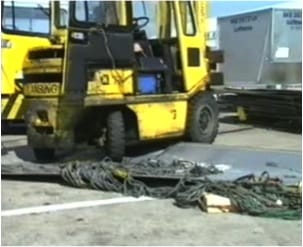
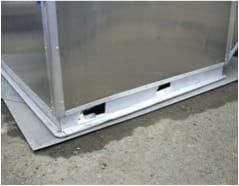
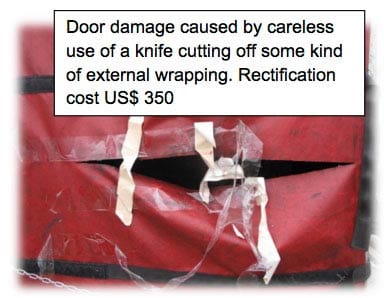
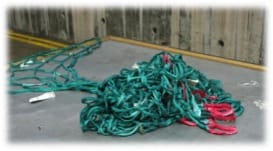 And then there are cargo nets and straps! There appears to be a widely held impression in the air cargo industry that pallet nets must cost just a few dollars each. And, cargo straps must be worth just a few cents. So it is of no consequence when either of these is “borrowed” for a multitude of other purposes. A typical cargo net, often found in a pile at the side of the cargo shed, and often with cut braid or other defects, cost its airline owner around US $100 to US $120. The cargo strap being used to hold a ULD on a cargo agent’s truck (or similar function), cost around US $8 to $10!
And then there are cargo nets and straps! There appears to be a widely held impression in the air cargo industry that pallet nets must cost just a few dollars each. And, cargo straps must be worth just a few cents. So it is of no consequence when either of these is “borrowed” for a multitude of other purposes. A typical cargo net, often found in a pile at the side of the cargo shed, and often with cut braid or other defects, cost its airline owner around US $100 to US $120. The cargo strap being used to hold a ULD on a cargo agent’s truck (or similar function), cost around US $8 to $10!
